SingaporeMotherhood | Lifestyle
March 2023
5 easy Pilates exercises to Stay in Shape during Pregnancy and after Giving Birth
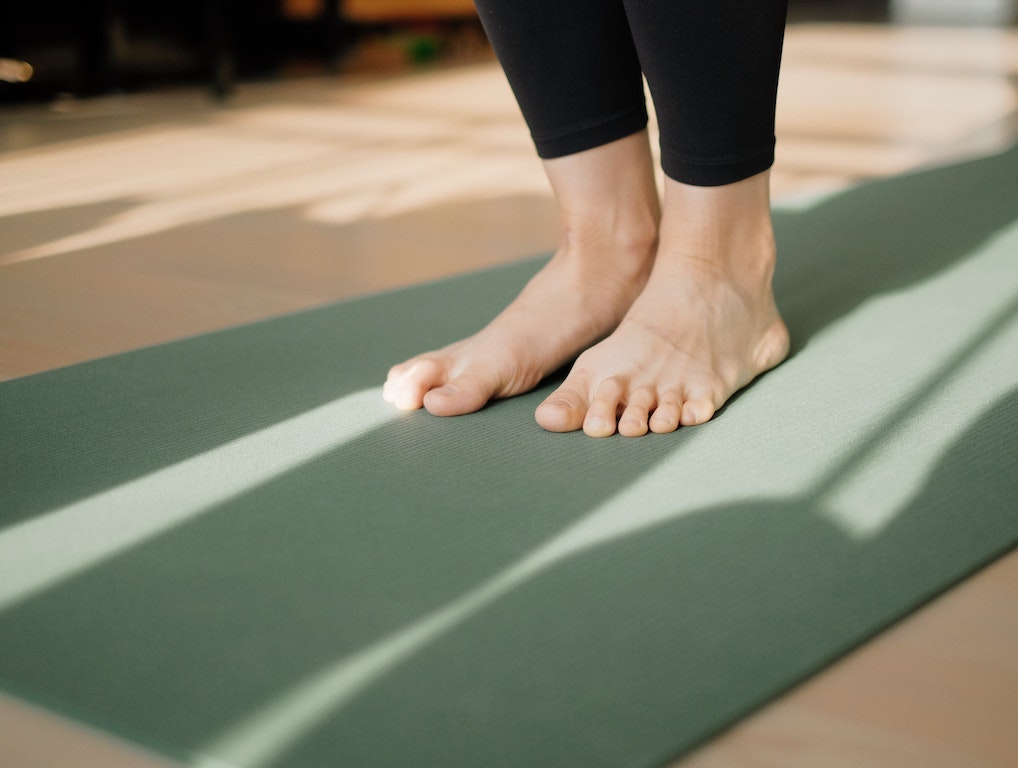
So you’re pregnant, and thinking of doing Pilates. Perhaps you’ve just had a baby, and heard that Pilates can help flatten the pregnancy pooch. Or seen those Pilates Tik Toks that promise chiselled abs in 30 days. It’s not all hogwash, says Deborah Wong, director and senior instructor at Breathe Pilates, and you don’t have to be “flexi” to practise Pilates either. However, Deborah cautions against expecting your body to spring back to its pre-pregnancy state after giving birth.
“Our bodies change so much during and after pregnancy. People always talk about bouncing back to their old self, but that is just not a realistic idea. We are not the same people anymore after having children – physically, mentally and emotionally – and that is fine. The idea is to move forward, to be the best version of yourself in this current season.”
Deborah Wong, director and senior instructor, Breathe Pilates
What makes Pilates an optimal exercise for pre- and postpartum women, Deborah adds, is its universality. You can do pre- and postnatal Pilates even if you have never done Pilates before. “For someone who has never exercised, it helps build a foundation they can keep working on. For someone who is very fit, Pilates can offer resistance and cardiovascular challenges (with modifications) that are able to accommodate the pregnant or postpartum body.”
“We encourage people who have never done Pilates before to start with private sessions. This allows us to really spend time to understand their body, what their needs are and how we can help them,” the mother of two children, aged 2.5 years old and nine months old, says.
Then, if they do join group sessions later, they are able to understand the reason behind each exercise and what needs they meet, how to execute it well, and how they should feel. Even after they stop doing Pilates, they will be empowered to take care of themselves well and know how to meet their needs.”
Why is Pilates such a great workout for mums-to-be, and new mums?
Pilates starts from the centre, the core. The focus is on the pelvic floor, diaphragm and abdominal muscles, which is where we need the most help with during pregnancy and postpartum.
How does Pilates address changes caused by pregnancy and birth?
First trimester
During the first trimester, lots of things are going on. The organs and the core life supporting function of the foetus is being formed, even though outwardly, the mother does not appear to have changed much.
Physically there aren’t many modifications to be made but most mums are tired and low on energy during this period. So we focus on gentle movement and stretches. We normally do not recommend starting a new exercise until you are in your second trimester where things are more stable. That said, someone who has been exercising constantly can definitely continue doing Pilates during the first trimester.
Let the instructor know how you feel, and always listen to your body.
Second trimester
In the second trimester, energy levels are back up, but most women are starting to show, and feeling some physical changes. We work on preparing the body for childbirth and child caring. In addition, we focus on breathing, strengthening the hip muscles, improving hip mobility and flexibility, shoulder and arm strength (babies are heavy!), upper back strength, and mobility.
We work on the abdominal muscles by keeping them engaged and flexible as they stretch. When the body changes and muscle stretches, there can be a mind-body disconnect and you can lose engagement of the muscle. By working out throughout pregnancy you keep the connection in the muscle group. This is important for postpartum recovery.
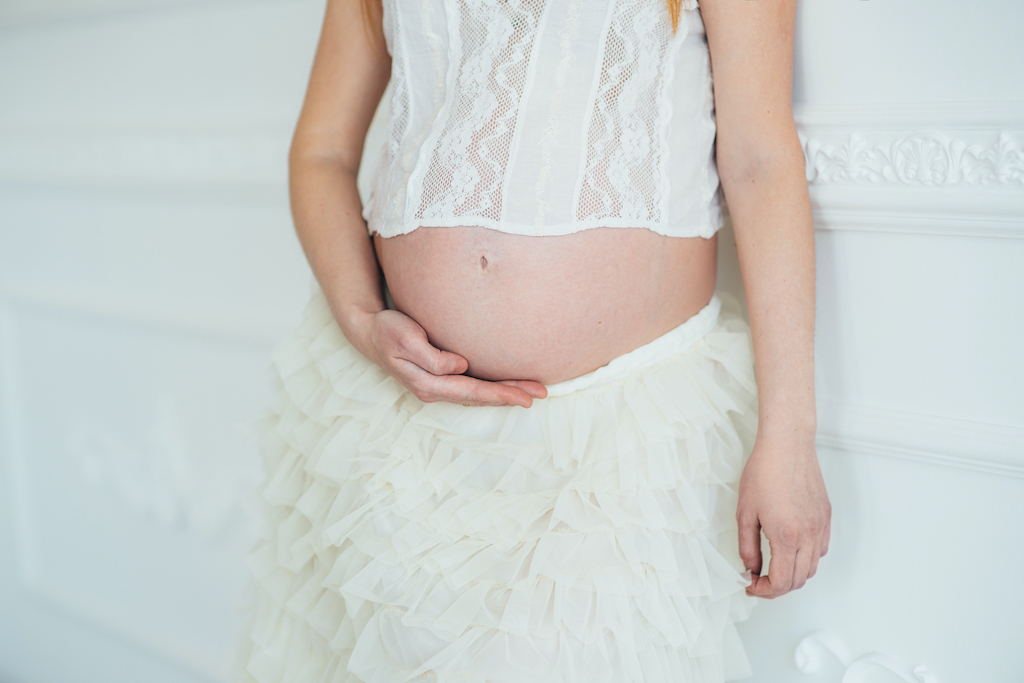
A lot of people say during postpartum that they are unable to feel their body anymore. That is because the muscles and the nerves stretch, and you do not feel them as well as you used to. If you have been working out during pregnancy, you help to maintain that connection as well as good movement patterns throughout pregnancy. Strong hips and pelvic muscles are also important to prevent lower back pain during pregnancy and postpartum.
We also work on pelvic floor flexibility and strength. Many women think they have weak pelvic floors, but actually, 50% of us have tight pelvic floors. This is a problem during labour because it doesn’t stretch and tear as easily, and can cause problems. It can also lead to urinary incontinence, pain during sex, dull aches, and a feeling of heaviness in the pelvis.
However, over contraction and overdoing of Kegels can actually worsen tight pelvic floors. Hence it is important to learn how to contract and relax the pelvic floor muscles so they work well. Pilates teaches you to engage and relax your pelvic floor properly.
Third trimester
By the third trimester we add on to the work that we did in the second trimester. Here, energy levels drop again so we need to accommodate that in the pacing of the class.
Postpartum
In the postpartum phrase we work backwards! It’s like a triangle; you start doing the exercises you did in your last week of pregnancy, and then slowly go backwards and increase the pacing and intensity as you progress. A lot of postpartum work is about reconnecting the core.
Your muscles are stretched out and proprioception (your body’s ability to sense movement, action, and location) is all over the place. So the first few weeks are about feeling your body and reconnecting with it.
Pilates uses props like the arc barrel, spine corrector, bands, and foam cushions to help you get into position and reconnect with your body. For breastfeeding mums, mums who have had C-sections and vaginal tears, a lot of positions are going to be uncomfortable or difficult. These props help them to feel more comfortable.
How are these classes different from regular Pilates classes?
The focus is different. There are also practical aspects — pregnant women cannot lie on their front! We need to make modifications to accommodate the growing belly.
(See also: Should You Exercise during Pregnancy?)
What precautions should pregnant women and new mums take note of before starting Pilates?
Pilates is really for everyone. For high-risk pregnancies and complicated births, you might need modifications and different programming. It is recommended to get clearance from your OB-GYN first. After which, you can still do Pilates, but private sessions will be more appropriate. In postpartum cases, check for diastasis recti or separation of the pelvic floor. These are not contraindications, but it is important for the Pilates instructor to know, for programming purposes.
When can I do postnatal Pilates after giving birth?
Immediately! Or as soon as you feel ready. Realistically, people move after birth. We are not bed-bound, and caring for a child is so physical. Moving also helps drain fluids and reduces stress. It is all about finding the right intensity and appropriate level of movement. Postnatal Pilates is very gentle and involves a lot of mobility, breath work, and stretches. If they can’t come into the studio, we have a video postnatal series for new mums to start as soon as they are comfortable with very gentle exercises that can be done immediately postpartum.
5 easy Pilates exercises that mums-to-be and new mums can do at home
Breathing
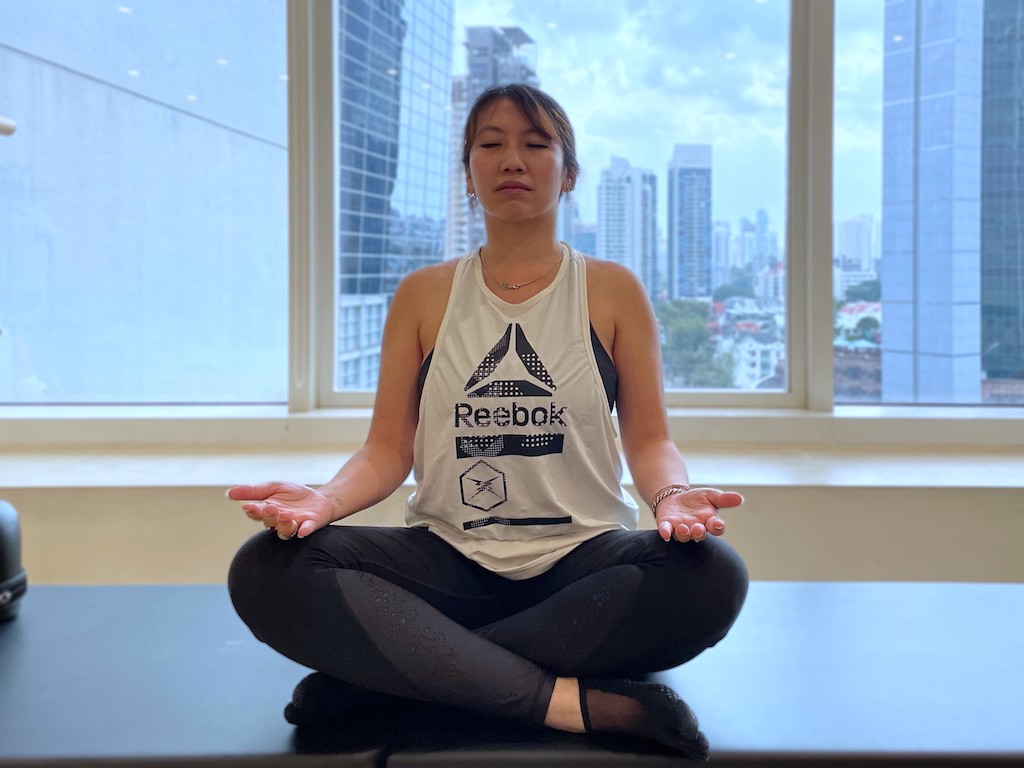
Improper breathing can result in neck pain, back pain, headaches, and anxiety. Breathing is a great core exercise, especially when expectant and a good way to reconnect the core postpartum.
How to do it:
- Place your hands below your rib cage.
- Inhale deeply through your nose.
- Feel the rib cage expanding forward, backwards and sideways.
- Exhale through your mouth.
- Feel the rib cage close.
- This exercise can be repeated as often as you desire!
Side Lying with Rotation
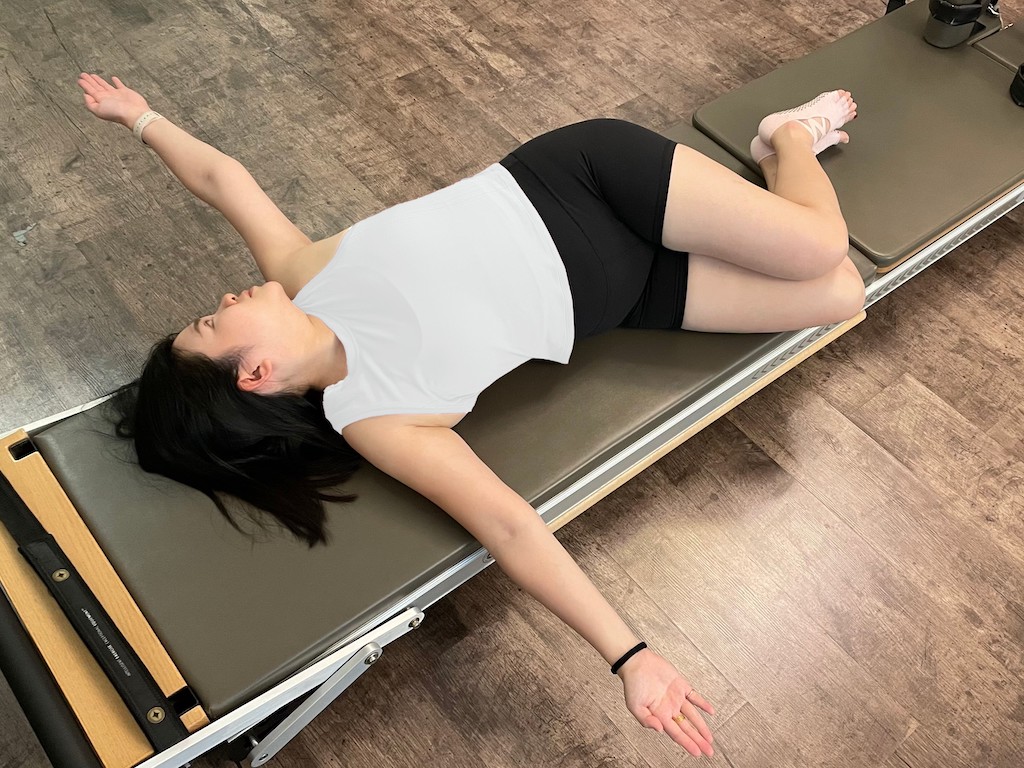
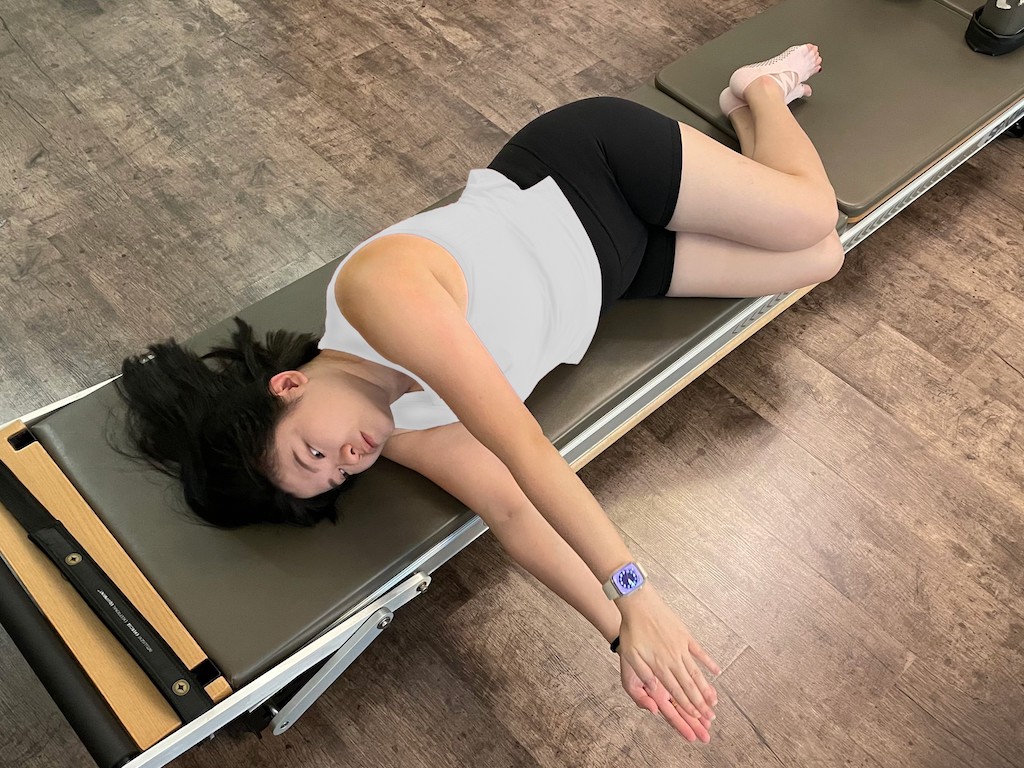
This is a great exercise to enhance thoracic mobility. The upper back undergoes a lot of stress during pregnancy and postpartum. A tight thoracic spine can result in neck ache, shoulder ache, and lower back ache. This helps to keep the upper back (thoracic spine) loose and mobile.
How to do it:
- Lie on your side with knees bent to about 90 degrees.
- Place your arms straight ahead with your hands together.
- Inhale, bring your arms up to the ceiling.
- Exhale. Rotate your arm, rib cage and spine as far as you can go while maintaining stability through the hips and lower back.
- Press your top knee down on the other to ensure stability.
- Think of rotating from the rib cage instead of the shoulder.
- Inhale and exhale to bring yourself back to the starting position.
- Repeat 5–10 times on each side.
Swimming Prep
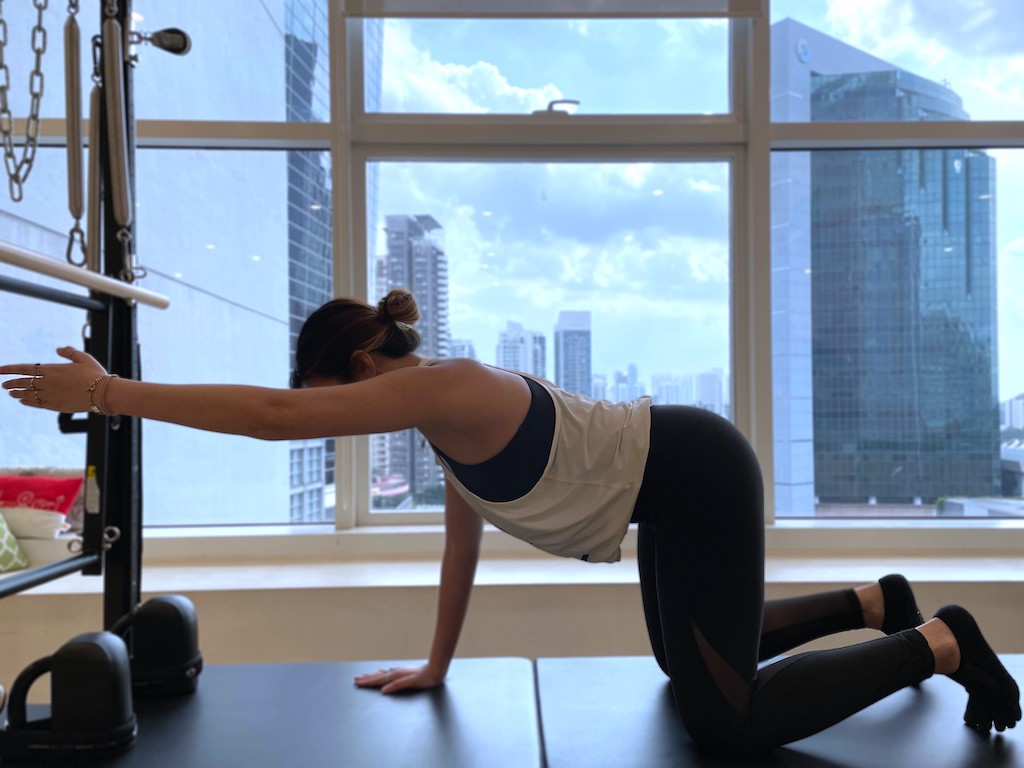
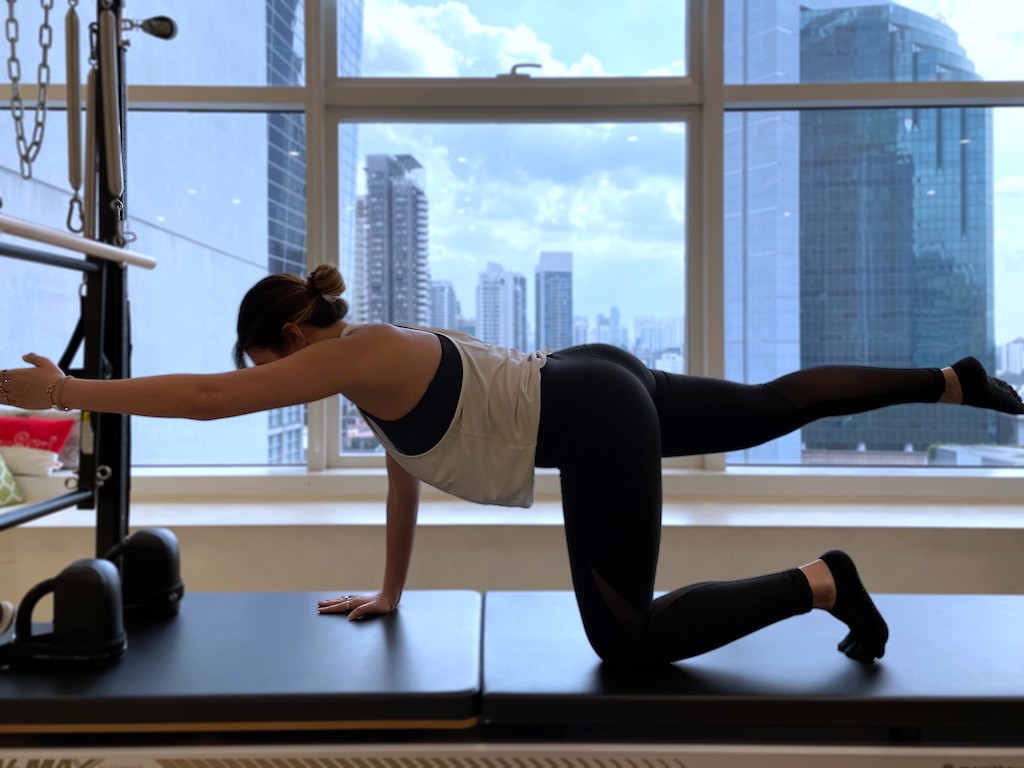
This is a core exercise which helps to stabilise the body as you work out the arms and legs alternately — a very functional movement in real life.
How to do it:
- Start in a tabletop position with knees hip distance apart, and hands shoulder-width apart.
- Inhale to begin.
- As you exhale, slowly reach away with the opposite arm and leg, bringing them to hip and shoulder height (or keep them on the floor if you are just starting).
- The body should maintain a stable position with no movement as you extend your arms and legs.
- Inhale to hold the position.
- As you exhale, slowly lower the limbs back down.
- Repeat on the other side.
Clam shells
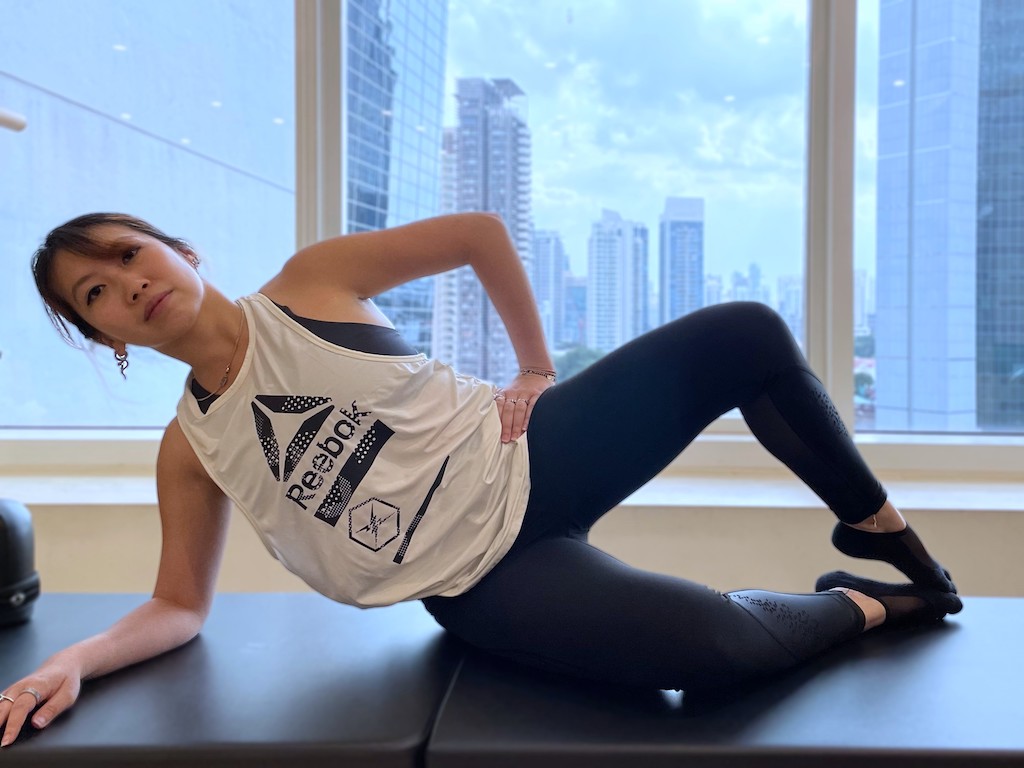
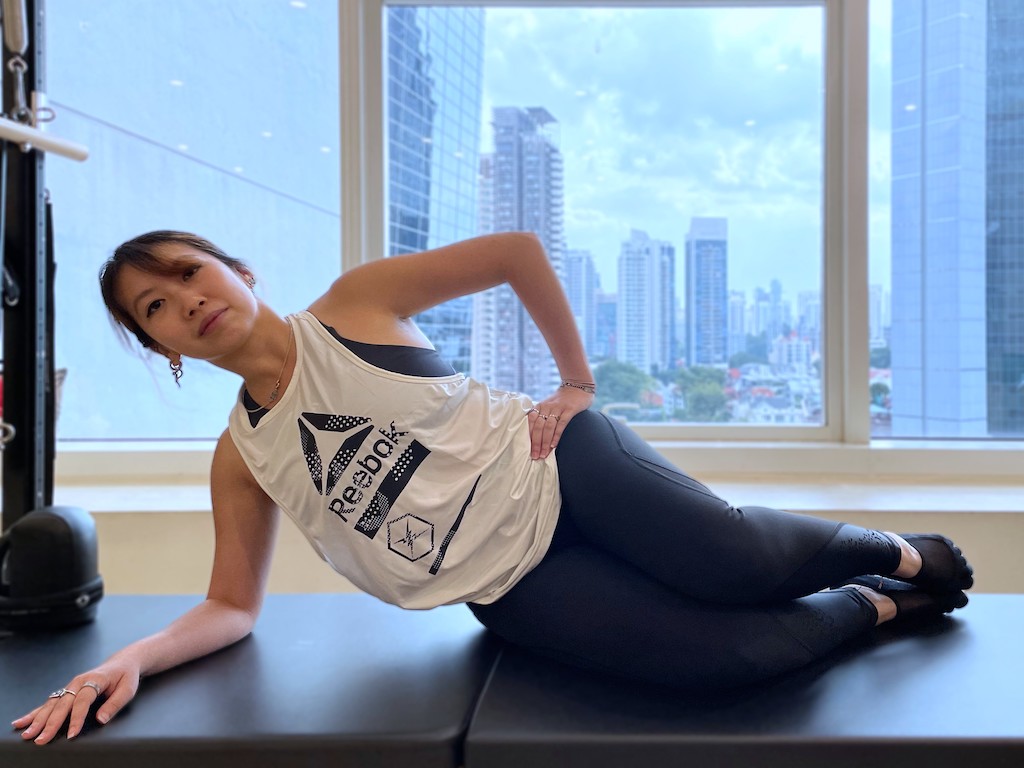
This is a hip strengthening exercise. Our hips and pelvis are important to support the lower back and prevent sciatica.
How to do it:
- Lie on your side with your knees slightly bent and with one leg on top of the other.
- Inhale. Keep your feet together and lift your top knee as high as you can maintain stability in your pelvis and lower back.
- Exhale. Lower your knee back to the initial position.
- Repeat 10 x on each side.
Squats
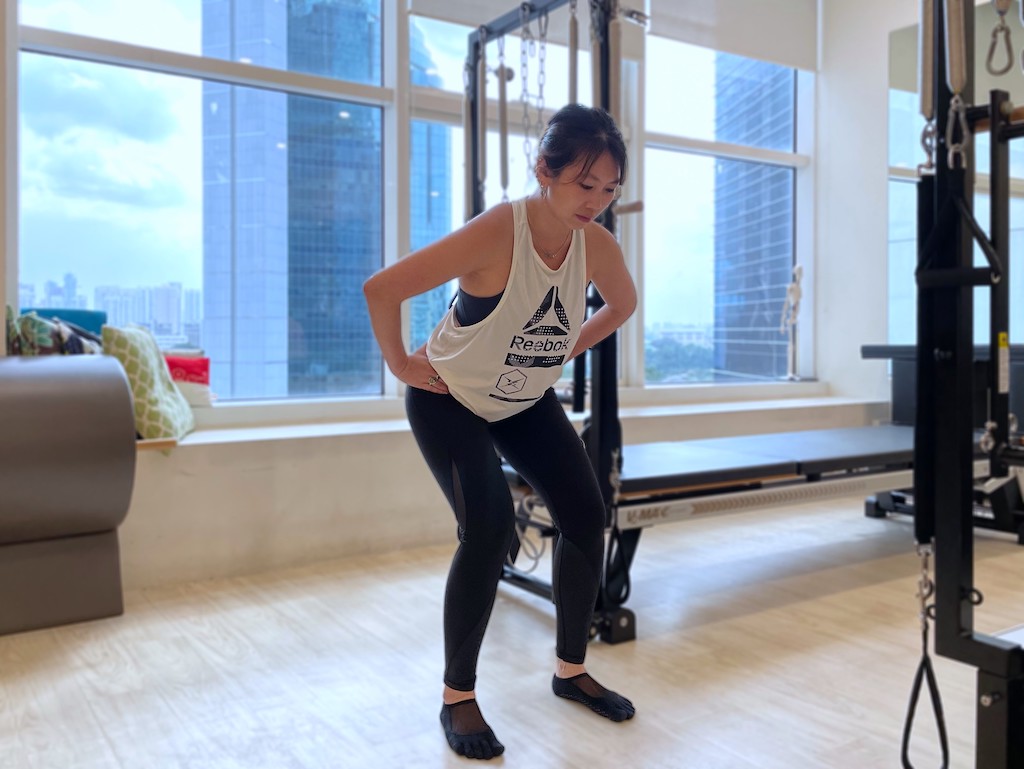
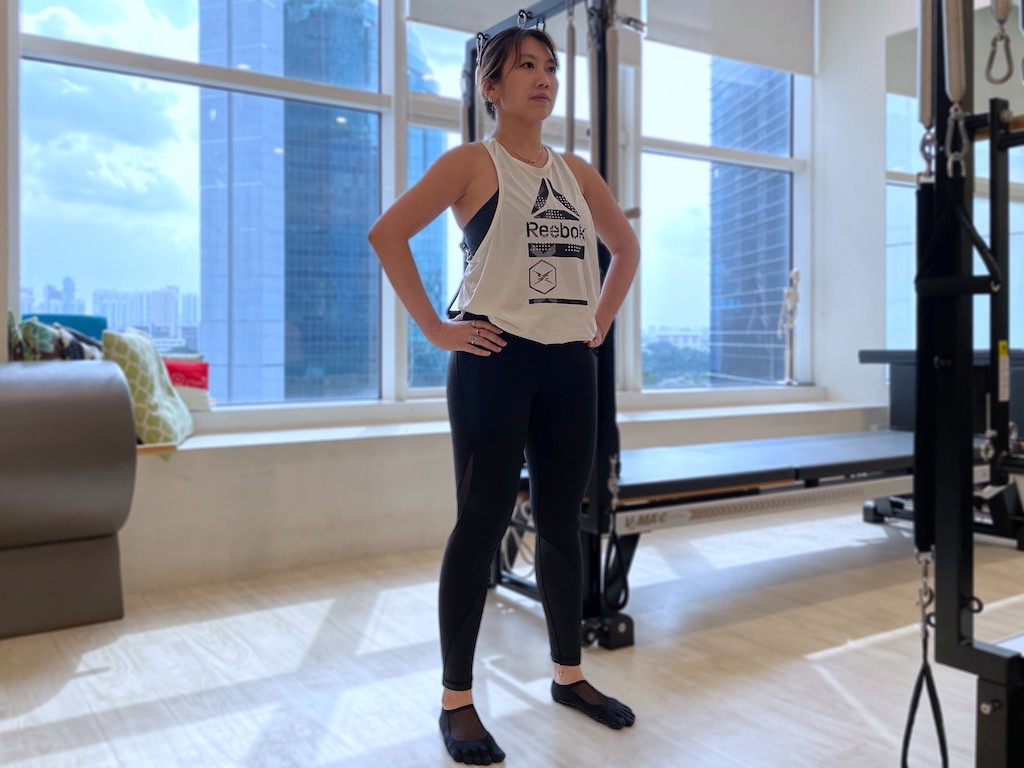
This is a functional leg and hip strengthening exercise. Lower back pain can often be attributed to the hips and leg not being strong enough to take the weight. This results in all the weight being dumped into the lower back which often occurs during pregnancy.
How to do it:
- Stand with feet hip-width apart.
- Inhale to bend knees and hips together at the same time to lower into a squat.
- Exhale press feet into the ground and stand up, extending hips and knees together.
- Repeat 10x.
Take note! As with all exercise, listen to your body. If it hurts or is uncomfortable, stop. During pregnancy and the immediate postpartum period, seek your obgyn’s advice and approval before going ahead with any form of exercise.
Featured image: Junseong Lee on Unsplash. Pilates exercise images courtesy of Breathe Pilates
All content from this article, including images, cannot be reproduced without credits or written permission from SingaporeMotherhood.
Follow us on Facebook, Instagram, and Telegram for the latest article and promotion updates.





